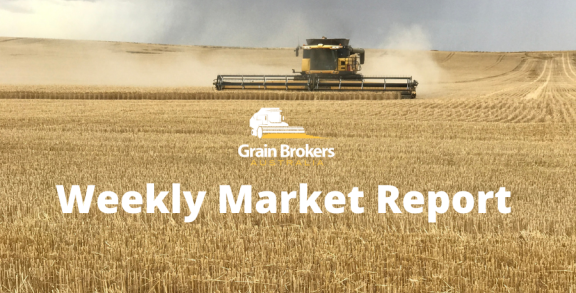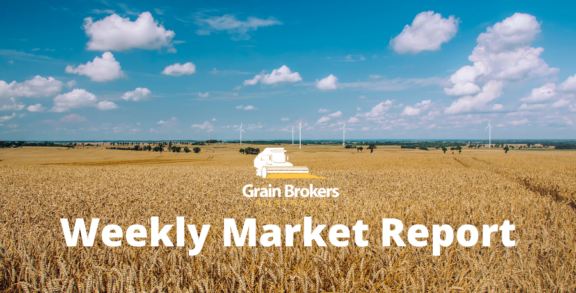
The United States Department of Agriculture has released the final chapter for the year of its never-ending global supply and demand saga known as WASDE. On the whole, last Friday’s delivery was relatively uneventful, with most of the crop production, consumption and trade estimates already dialled into market sentiment.
Wheat futures were bleeding ahead of the report, and that trend continued into the close as the report pointed to reduced production, declining global consumption, increased trade and slightly lower 2022/23 closing stocks. The USDA cut global output by 2.1 million metric tonne, decreased worldwide usage by 1.6MMT, and increased international trade by 2.2MMT, with the end result being a 0.5MMT decrease in carry-out stocks.
On the production front, the USDA landed on 12.5MMT for Argentinian production, down from 15.5MMT in November but still higher than the latest estimates from the Buenos Aires Grain Exchange (12.4MMT) and Rosario Grains Exchange (11.8MMT). This led to exports being clipped by 2.5MMT compared to the November forecast of 7.5MMT, substantially lower than the 16.3MMT shipped last season.
The Canadian production number was also reduced with the USDA adopting the latest Statistics Canada wheat output figure of 33.8MMT, 1.2MMT lower than the USDA’s November cut. Despite the decrease, Canadian exports were untouched at 26MMT, almost 9MMT higher than in the 2021/22 marketing year.
The only production increase of note was in Australia, where the USDA adopted the forecast released last week by the Australian Bureau of Agricultural and Resource Economics and Sciences (ABARES). However, like last year, it is a case of the blind leading the blind, with the ABARES number of a record 36.6MMT lagging many local trade estimates by at least 4MMT.
Looking at exports over the last twelve months, robust domestic consumption, and anecdotal bulk handler carry-out numbers, last year’s crop must have been close to 40MMT, and a wheat harvest in excess of 42MMT in 2022/23 is a distinct possibility before the headers are parked up early in 2023. There have certainly been losses due to rain and flooding in New South Wales, but they will be more than recouped by record, or near-record production in Queensland, South Australia and Western Australia. And Victorian output will also be much higher than last season.
Increasing Australian exports from 26MMT to 27.5MMT is undoubtedly achievable, considering just over 28MMT was shipped from Australian ports in the twelve months to October 30. This high mark was achieved despite significant logistics issues and port disruptions in Queensland and New South Wales over the past 12 months and the underutilisation of South Australia’s export capacity due to a below-average crop in 2021.
The USDA remains stubbornly low on Russian wheat production, keeping its number unchanged at 91MMT despite many Russian analysts calling the crop over 100MMT. The USDA did increase Russian exports by 1MMT to 43MMT as the shipping pace continues to surprise the market. The Ukraine export forecast was also increased by 1.5MMT to 12.5MMT on the back of the extension to the Black Sea grain corridor.
Corn futures were mixed with the nearby, old crop contracts higher and new crop contracts lower. The old crop gains likely reflected lower Ukrainian corn supplies as farmers struggle to harvest their crop amid a wet autumn and the ongoing Russian military invasion. Global corn production was decreased by a total of 6.5MMT to 1,161.9MMT compared to November, with Ukraine accounting for 4.5MMT of that fall and Russian another 1MMT.
Despite continued dryness across almost all of Argentina and parts of Brazil, the USDA left corn production unchanged at a record 55MMT and a record 126MMT, respectively. Estimates in Argentina have started to drop on account of the drought, with the Buenos Aires Grain Exchange currently sitting at 50MMT. The higher production in Brazil is supported by a 9 per cent jump in the planted area, but some regions desperately need a drink.
The USDA decreased worldwide corn consumption in 2022/23 by 4.8MMT to 1,170.6MMT, and again it was Ukraine accounting for the lion’s share, down 3MMT to 7.7MMT. Demand from Southeast Asian consumers and South Korea is expected to be 1.5MMT lower compared to the November report.
According to the USDA, the global corn trade in 2022/23 is set to drop by 1.1MMT. Unsurprisingly, US exports are down 1.9MMT after a lacklustre autumn marketing campaign and China’s approval of Brazilian imports. This was more than offset by a 2MMT increase in Ukrainian corn exports, despite the significant decrease in production expectations. Argentinian exports at 41MMT seems optimistic given the faltering crop, and Brazilian shipments at 47MMT may be pessimistic if China favours the South American origin over the US in 2022/23.
The USDA pushed international soybean production fractionally higher month-on-month to 391.2MMT. The major producers were all unchanged, with Brazil at a record 152MMT, the US at 118.3MMT and Argentina at 49.5MMT. However, the latter must be in serious jeopardy as the devastating drought continues unabated.
The December soybean trade picture is almost exactly the same as the November rendition, the exception being Argentina, where exports were increased by 0.5MMT. The futures reaction to the USDA’s report was the antithesis of corn, old crop down and new crop up, but the movements were minor. Soybean prices struggled to gain traction after a rough week for China’s live hog futures, down nine per cent in five sessions as falling retail demand and high slaughter numbers keep Chinese pork stocks plentiful in the short term.
The December WASDE is rarely a game changer, and this edition was no exception. Wheat is all about Russia at the moment and whether it can maintain the strong export pace, keeping downward pressure on global prices amid Black Sea bottlenecks and the onset of winter. The row-crop picture will be dominated by South American production prospects, with the world relying on big crops in Brazil and widespread rains for the Argentinian farmers.
Of course, there is also the football World Cup to divert attention at the moment, and I expect it will get very Messi in Argentina if they manage to claim the coveted trophy in Doha this weekend.
Call your local Grain Brokers Australia representative on 1300 946 544 to discuss your grain marketing needs.





